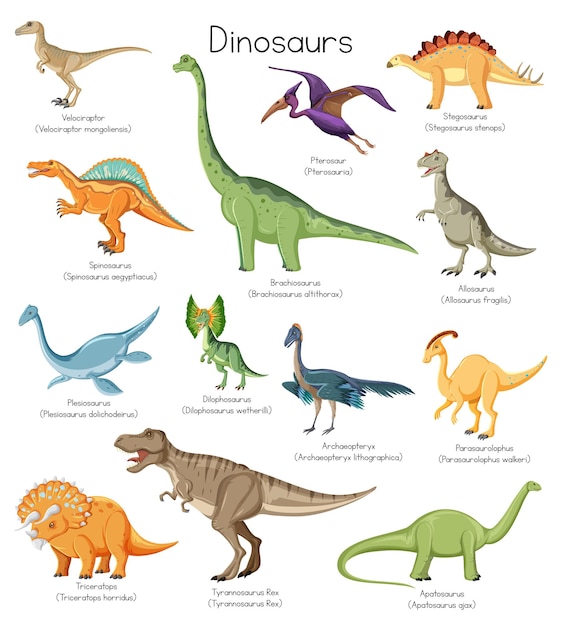Interesting Facts about Mosasaurus

Mosasaurus was a giant aquatic reptile that lived during the Late Cretaceous period.
It was one of the largest marine predators, growing up to 50 feet in length.
Mosasaurus had a streamlined body and powerful tail, which allowed it to swim rapidly through the water.
This ancient reptile had a double-hinged jaw, meaning it could open its mouth incredibly wide to catch prey.
Mosasaurus had a long, snake-like neck with rows of sharp teeth, perfect for capturing fish and other marine animals.
Contrary to popular belief, Mosasaurus was not a dinosaur but rather a type of marine reptile.
Fossils of Mosasaurus have been found on every continent, suggesting a global distribution during its time.
Mosasaurus had strong flippers, allowing it to navigate the ocean with ease.
It is believed that Mosasaurus was an ambush predator, using its speed to surprise and capture unsuspecting prey.
Mosasaurus likely had excellent eyesight, enabling it to see its prey from a distance.
Despite its massive size, Mosasaurus was a skilled swimmer and could turn and change directions quickly.
The name Mosasaurus means Meuse lizard in reference to the river where its first fossil was discovered.
Mosasaurus is closely related to modern-day snakes and lizards rather than marine mammals.
Its fossils have been found in deposits that were once part of ancient oceans and sea basins.
Mosasaurus likely had a deep-sea hunting lifestyle, venturing into the open ocean to feed.
Interesting Facts about Mosasaurus part 2
Mosasaurus was an apex predator, meaning it had no natural predators at the top of the food chain.
Its teeth were conical and sharp, designed to pierce and grip slippery prey.
Mosasaurus had a pneumatic respiratory system, utilizing air-filled chambers to stay buoyant in the water.
The first recognized Mosasaurus fossil was discovered in 1764, long before the concept of dinosaurs existed.
Mosasaurus likely gave birth to live young, as opposed to laying eggs like most reptiles.
It is estimated that Mosasaurus had a lifespan of around 20-30 years.
The tail of Mosasaurus was shaped like a crescent moon, providing extra propulsion during swimming.
Mosasaurus fossils have been found with preserved stomach contents, offering insights into its diet.
It is believed that Mosasaurus had a keen sense of smell, helping it locate prey in vast ocean waters.
Mosasaurus evolved from land-dwelling reptiles but adapted to life in the ocean over millions of years.
Mosasaurus had a body covered in thick skin and scales, similar to modern-day reptiles.
Some paleontologists speculate that Mosasaurus might have had a bioluminescent glow on its body.
Mosasaurus likely had a high metabolic rate, requiring frequent feeding to sustain its energy levels.
The genus Mosasaurus includes several species, each with its own unique characteristics and adaptations.
Mosasaurus had a long, flat skull with a powerful bite force, capable of crushing through even the toughest prey.
It is believed that Mosasaurus had a keen sense of hearing, essential for sensing movement in the water.
The largest species of Mosasaurus, Mosasaurus hoffmanni, is named after the collector who discovered its first fossil.
Mosasaurus had specialized flippers, resembling paddles, to help it navigate in different water depths.
Fossils of Mosasaurus have been found in sedimentary rocks, suggesting it preferred shallow coastal waters.
Mosasaurus likely had a complex social structure, with individuals forming territories and hierarchies.
The teeth of Mosasaurus were continually replaced throughout its lifetime, much like modern-day sharks.
Mosasaurus likely had a keen sense of touch, with sensory organs on its body allowing it to detect vibrations in the water.
Mosasaurus fossils have been found with evidence of injuries, suggesting it engaged in territorial disputes or prey competitions.
Mosasaurus had a long, flexible body, allowing it to twist and turn while chasing prey.
It is believed that Mosasaurus had a warm-blooded metabolism, enabling it to maintain a high body temperature in cold waters.
Mosasaurus likely had a varied diet, including fish, squid, and even smaller marine reptiles.
The extinction of mosasaurs, including Mosasaurus, coincided with the mass extinction event that wiped out the dinosaurs.
Mosasaurus likely had a good sense of balance, allowing it to swim gracefully even with its large size.
The discovery of Mosasaurus fossils has greatly contributed to our understanding of marine life during the Late Cretaceous period.
Mosasaurus was an incredible creature from the past, showcasing the diversity and adaptability of life on Earth.

